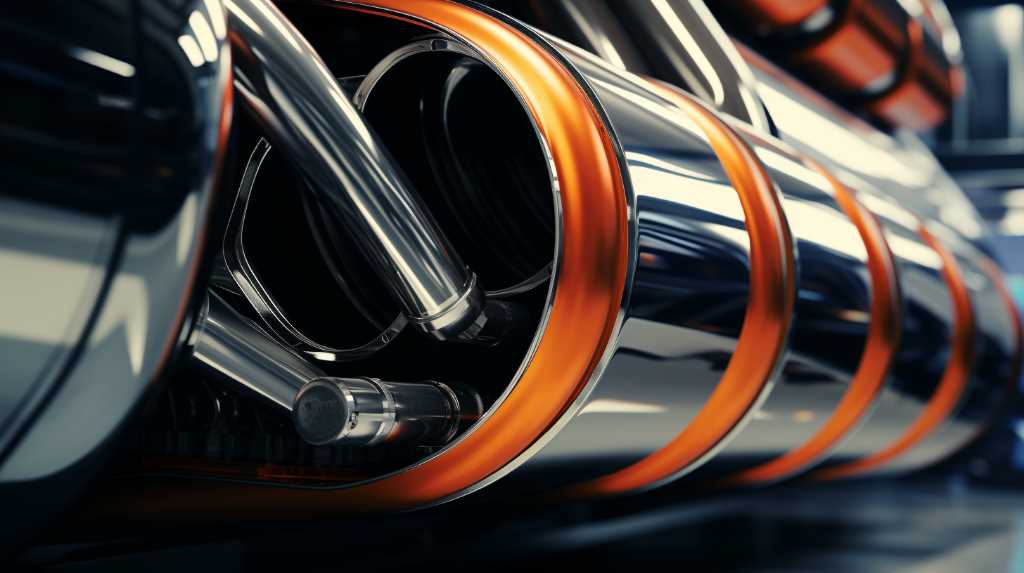If you’re a racer looking to boost your track performance, understanding the ins and outs of performance exhaust systems is crucial. From optimizing engine power to meeting track regulations, track-ready exhausts play a vital role. In this article, we’ll dive into what you need to know about performance exhaust systems, exploring different types, materials, and design considerations. Get ready to enhance your racing game with the right performance exhaust upgrades.
Key Takeaways
- Performance exhaust systems improve engine efficiency and power output.
- Different types of performance exhaust systems cater to different racing styles and performance goals.
- Safety and compliance regulations, including noise and emissions restrictions, are crucial for racers using performance exhaust systems.
- Proper installation and maintenance of the exhaust system are essential for optimal performance and reduced environmental impact.
The Importance of Performance Exhaust Systems in Racing

You should always prioritize the installation of a performance exhaust system in your racing vehicle. Whether you’re a professional racer or a passionate enthusiast, having a high-quality exhaust system can make a significant difference in your performance on the track.
A performance exhaust system is specifically designed to enhance your engine’s efficiency and power output, allowing you to achieve better acceleration, increased horsepower, and improved overall performance. By optimizing the exhaust flow, these systems help to reduce backpressure, allowing the engine to breathe more freely and efficiently. This results in improved fuel combustion and better exhaust gas evacuation, which in turn leads to enhanced power delivery and responsiveness.
Additionally, performance exhaust systems are often made from lightweight materials like stainless steel or titanium, reducing the overall weight of your vehicle and improving its handling capabilities. Furthermore, these systems can provide your racing vehicle with a more aggressive and distinctive sound, adding to the overall exhilarating experience of being on the track.
Understanding the Role of Exhaust Flow in Track Performance

To optimize your track performance, it’s important to understand how exhaust flow plays a crucial role. The flow of exhaust gases through your vehicle’s exhaust system can greatly impact its overall performance on the track. The primary purpose of the exhaust system is to safely and efficiently remove the exhaust gases produced by the engine. However, the design and efficiency of the exhaust system can also have a significant impact on power output and overall performance.
When it comes to track performance, exhaust flow plays a crucial role in two main areas: power and sound. The faster and more efficiently the exhaust gases are able to exit the engine, the more power the engine can produce. A well-designed exhaust system can help minimize back pressure, allowing the engine to breathe more freely and generate more power. Additionally, the sound produced by the exhaust system can also affect performance. Some tracks have specific noise regulations, so it’s important to choose an exhaust system that meets these requirements while still enhancing performance.
In order to maximize your track performance, it’s important to choose an exhaust system that’s specifically designed for racing applications. These systems are typically crafted from high-quality materials and feature optimized designs to improve exhaust flow. Additionally, it’s important to consider the use of headers, which can further enhance exhaust flow by improving the scavenging effect.
Key Considerations for Choosing Track-Ready Exhausts

Before making a decision, carefully evaluate how frequently you’ll be using your vehicle on the track and what specific requirements you have for a track-ready exhaust system. These considerations are crucial in ensuring that you choose the right exhaust system that will meet your needs on the track.
Firstly, you need to determine the level of performance you’re looking for. Are you a casual track enthusiast or a professional racer? This will help you decide whether you need a more aggressive exhaust system with a louder sound or a quieter one that complies with noise regulations.
Next, think about the type of racing you’ll be participating in. Different race categories require different exhaust configurations. For example, if you’ll be competing in drag racing, a system that prioritizes low-end torque and quick acceleration would be ideal. On the other hand, for circuit racing, an exhaust system that enhances top-end power and allows for better high-speed performance would be more suitable.
Consider the material of the exhaust system as well. Stainless steel is often the preferred choice due to its durability and resistance to corrosion. However, if weight reduction is a priority, you might want to consider a titanium exhaust system.
Finally, think about the installation process. Some exhaust systems may require modifications to your vehicle, while others are designed to be a direct bolt-on. Assess your comfort level with modifications and ensure that the system you choose is compatible with your vehicle.
Exploring Different Types of Performance Exhaust Systems
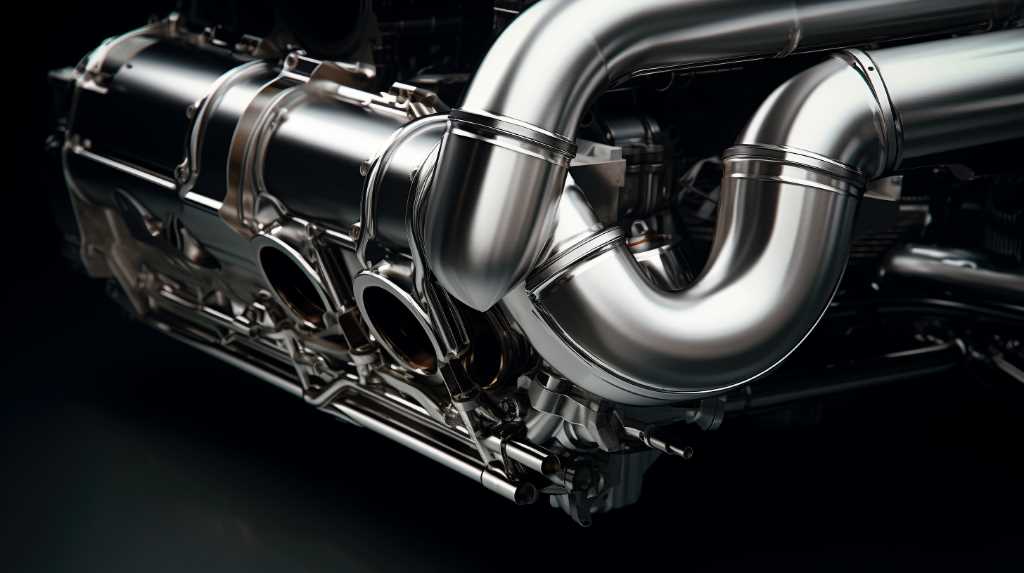
When exploring different types of performance exhaust systems, consider the specific needs of your racing style and the level of performance you desire. There are several types of performance exhaust systems available, each offering its own benefits and characteristics.
One popular option is the cat-back exhaust system, which replaces the stock exhaust system from the catalytic converter to the rear of the vehicle. This type of system provides improved exhaust flow, resulting in increased horsepower and torque.
Another option is the header-back exhaust system, which replaces the entire exhaust system from the headers to the rear of the vehicle. This type of system is typically chosen for high-performance applications and provides even greater gains in horsepower and torque.
If weight reduction is a priority, you may consider a lightweight titanium exhaust system. These systems are known for their durability and ability to withstand high temperatures. Additionally, they offer a significant reduction in weight compared to traditional stainless steel systems.
Ultimately, the choice of performance exhaust system will depend on your specific racing needs and performance goals. It’s important to do thorough research and consult with experts to ensure you select the right system for your vehicle.
Enhancing Engine Power With Performance Exhaust Upgrades

If you want to boost your engine power, consider upgrading your performance exhaust system. A performance exhaust upgrade can provide significant gains in horsepower and torque, giving your vehicle that extra edge on the track. By improving the flow of exhaust gases, a performance exhaust system allows your engine to breathe more efficiently, resulting in enhanced power output.
One of the main benefits of a performance exhaust upgrade is the reduced backpressure in your exhaust system. Stock exhaust systems are designed to meet emissions regulations and noise restrictions, which often result in compromised performance. By installing a performance exhaust system, you can increase the diameter of the pipes, reduce restrictions, and improve the flow of exhaust gases. This reduction in backpressure allows the engine to expel exhaust gases more easily, resulting in improved engine efficiency and power.
Performance exhaust systems also feature high-flow mufflers and resonators, which help to further optimize airflow. These components are designed to minimize restrictions and reduce noise while maximizing power output. By replacing the stock muffler with a high-flow muffler, you can achieve a more aggressive exhaust note while improving performance.
Additionally, performance exhaust systems are often made from lightweight materials such as stainless steel or titanium. This not only reduces the overall weight of the vehicle, but also improves the power-to-weight ratio, resulting in better acceleration and handling.
Maximizing Fuel Efficiency With the Right Exhaust System

To truly maximize your fuel efficiency, choose the right exhaust system and enjoy significant savings at the pump. While performance exhaust systems are commonly associated with increased power and a more aggressive sound, they can also play a crucial role in improving your vehicle’s fuel economy.
One of the main factors that affect fuel efficiency is backpressure. Backpressure is the resistance that exhaust gases face when flowing out of the engine. A properly designed exhaust system can minimize backpressure, allowing the engine to breathe more freely and improving fuel combustion efficiency. By reducing backpressure, the engine doesn’t have to work as hard to expel exhaust gases, resulting in better fuel economy.
Another aspect to consider is the material used in the construction of the exhaust system. Lightweight materials like stainless steel or titanium can significantly reduce the overall weight of the exhaust system. A lighter exhaust system means less weight for the engine to move, resulting in improved fuel efficiency.
Furthermore, some performance exhaust systems feature advanced technologies such as variable valve timing or adjustable baffles. These technologies allow you to customize the exhaust flow and backpressure according to your driving needs. By optimizing the exhaust flow, you can achieve better fuel efficiency without sacrificing performance.
The Impact of Exhaust Design on Track Performance
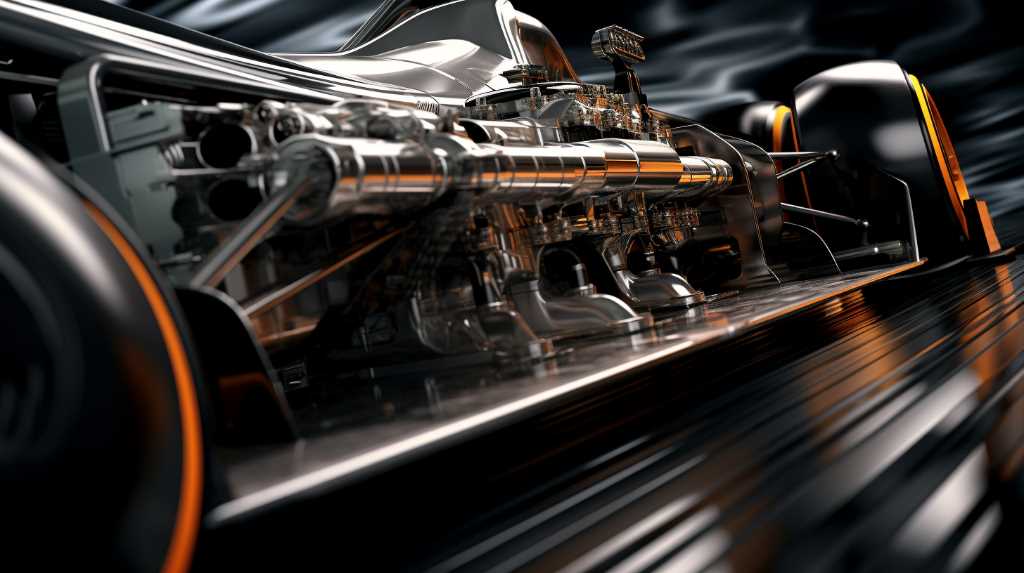
Get ready to experience a significant boost in track performance with the right exhaust design. The impact of exhaust design on track performance can’t be overlooked. A well-designed exhaust system can greatly enhance the overall performance of your vehicle on the track.
One important factor to consider is the size of the exhaust pipes. Larger diameter pipes can improve exhaust flow, allowing for better engine breathing and increased horsepower. Additionally, the use of mandrel bends in the exhaust system can minimize restrictions and improve exhaust gas flow. This can lead to improved throttle response and increased power output. Another key aspect of exhaust design is the use of high-quality materials. Stainless steel exhaust systems are highly recommended for track use due to their durability and resistance to corrosion. Furthermore, the use of performance mufflers can help reduce backpressure and increase horsepower.
It’s also important to consider the placement of the exhaust system. A properly positioned exhaust can help improve weight distribution and aerodynamics, resulting in better handling and overall track performance.
Performance Exhaust Materials: Which Is Best for Racing
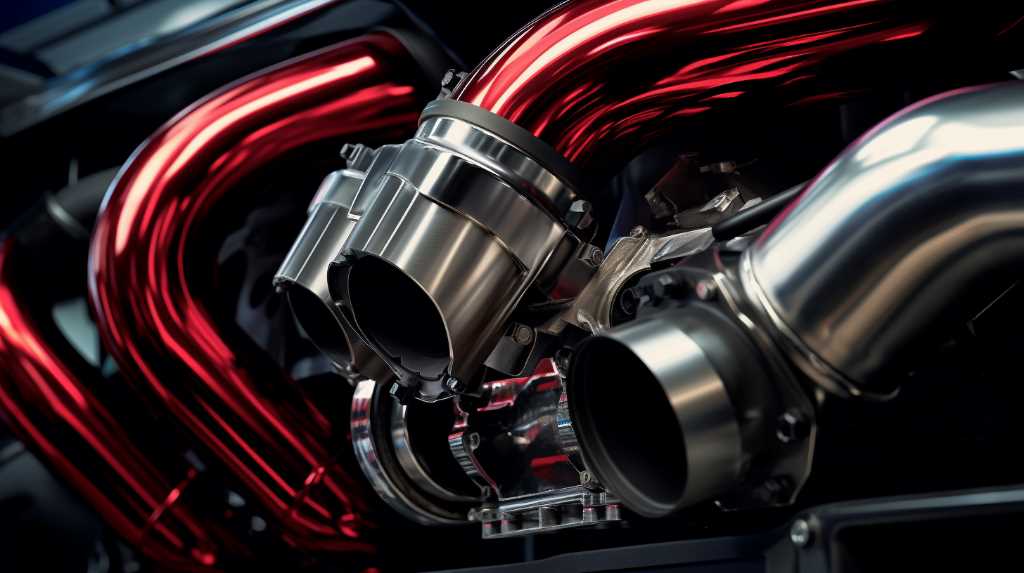
When choosing a performance exhaust for racing, consider the materials that offer the best durability and performance. The right choice of material can significantly impact your racing performance. One of the most commonly used materials in performance exhaust systems is stainless steel. Stainless steel is known for its excellent resistance to corrosion, which is crucial in racing conditions where the exhaust is exposed to high heat and moisture. Additionally, stainless steel offers good strength and durability, ensuring that the exhaust system can withstand the rigors of racing.
Another popular material is titanium. Titanium is extremely lightweight, making it ideal for racing applications where weight reduction is crucial. It also has excellent heat resistance properties, allowing it to withstand extreme temperatures without losing its strength. However, titanium can be more expensive than other materials.
Lastly, there’s carbon fiber. Carbon fiber is a lightweight and strong material that offers excellent heat resistance. It’s commonly used in high-performance racing exhaust systems to reduce weight and improve overall performance. However, carbon fiber can be quite costly and may require more maintenance compared to other materials.
Ultimately, the best material for a performance exhaust system for racing depends on your specific needs and budget. Consider factors such as durability, weight reduction, heat resistance, and cost when making your decision.
Tuning and Optimizing Performance Exhaust Systems for the Track
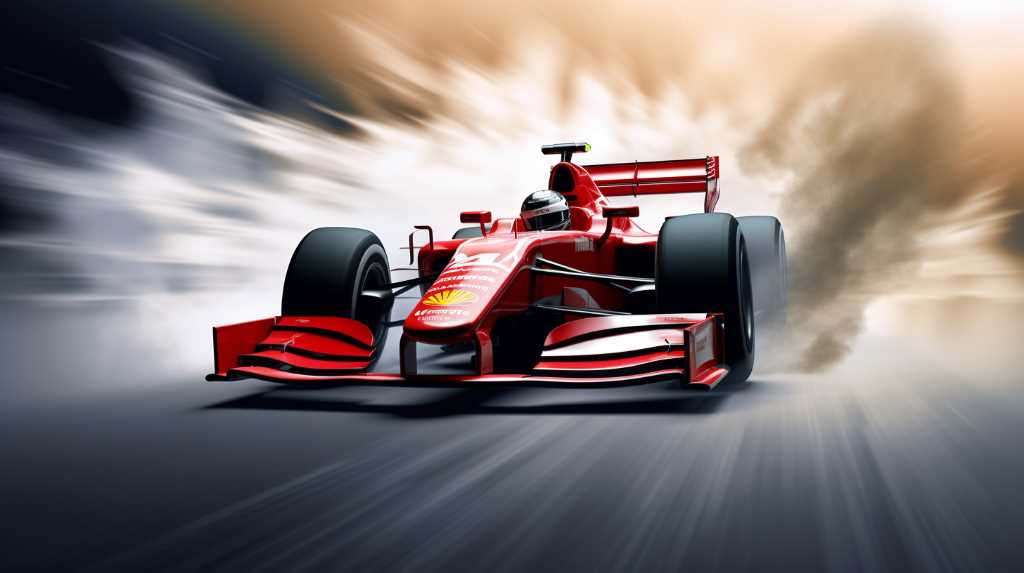
With the right adjustments and fine-tuning, you can optimize the performance of your track-ready exhaust system. Tuning your exhaust system for the track involves making modifications to maximize power and improve overall performance.
One important aspect of tuning is selecting the right exhaust diameter. By choosing a larger diameter, you can increase exhaust flow and reduce backpressure, allowing for better engine breathing and increased horsepower. However, it’s crucial to strike a balance, as an excessively large diameter can lead to a loss of low-end torque.
Another important consideration is the design of the exhaust system. Performance exhaust systems often feature mandrel-bent tubing, which allows for smoother airflow and reduced restrictions. Additionally, the inclusion of high-flow catalytic converters or the removal of catalytic converters altogether can further enhance performance.
It’s also worth noting that adjusting the length of the exhaust pipes can help optimize power delivery at different engine speeds. Finally, investing in a quality muffler can help reduce noise while still allowing for optimal performance.
Safety and Compliance: Meeting Track Regulations With Performance Exhausts
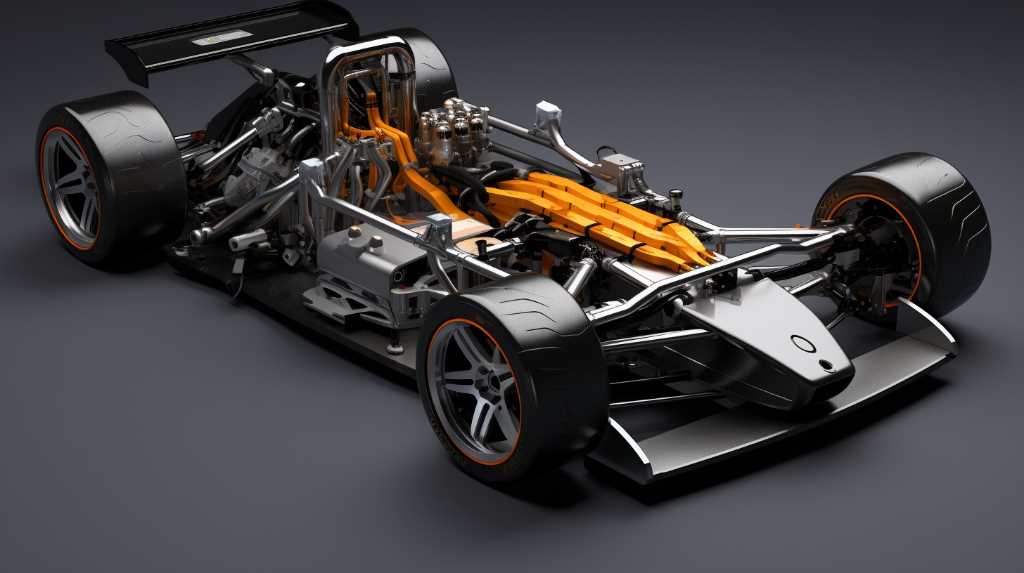
Before hitting the track with your high-performance exhaust system, it’s crucial to understand the safety and compliance regulations you need to meet. One important aspect is noise level restrictions, as some tracks have specific decibel limits to ensure a controlled environment. Additionally, you must ensure that your exhaust system complies with emissions regulations to avoid penalties or disqualification.
Noise Level Restrictions
Make sure your vehicle’s exhaust system meets the track’s noise level restrictions for safety and compliance. When it comes to racing, noise regulations are put in place to ensure a safe and enjoyable environment for both participants and spectators.
Excessive noise can’t only be a nuisance but can also pose a safety risk by distracting drivers and hindering communication on the track. Different tracks may have different noise level limits, so it’s essential to check the regulations specific to the track you’ll be racing on.
Upgrading to a performance exhaust system can enhance your vehicle’s performance, but it’s crucial to choose one that meets the noise level restrictions set by the track. By complying with these regulations, you can enjoy your racing experience while also prioritizing safety and abiding by the rules.
Emissions Compliance Requirements
Ensure your vehicle’s exhaust system meets the track’s emissions compliance requirements for safety and compliance. When it comes to racing, it’s important to consider the environmental impact of your vehicle’s exhaust emissions. Many tracks have strict regulations in place to ensure that vehicles on the track aren’t emitting excessive pollutants into the air. These regulations are in place to protect both the environment and the health and safety of those at the track.
Before hitting the track, make sure to check the emissions compliance requirements set by the track you’ll be racing at. This may involve testing your vehicle’s emissions levels or ensuring that your vehicle’s exhaust system is equipped with the necessary components, such as catalytic converters, to keep emissions within acceptable limits.
Frequently Asked Questions
What Are the Benefits of Using a Performance Exhaust System in Racing?
Using a performance exhaust system in racing has several benefits. It can increase horsepower, improve engine efficiency, and enhance the overall performance of your vehicle on the track.
How Does the Exhaust Flow Affect the Overall Performance of a Race Car?
The exhaust flow greatly impacts your race car’s performance. A well-designed exhaust system allows for efficient evacuation of exhaust gases, leading to improved engine power, torque, and overall performance on the track.
Are There Any Specific Factors to Consider When Choosing a Track-Ready Exhaust?
When choosing a track-ready exhaust, consider factors like material, size, and design. Look for lightweight options that provide optimal flow and backpressure, maximizing power and torque for better performance on the track.
Can You Explain the Different Types of Performance Exhaust Systems Available for Racers?
Sure! There are several types of performance exhaust systems available for racers. These include cat-back, axle-back, and header-back systems. Each type offers different benefits in terms of power, sound, and weight reduction.
Is It Possible to Improve Fuel Efficiency With the Right Performance Exhaust System?
Yes, it is possible to improve fuel efficiency with the right performance exhaust system. By optimizing airflow and reducing back pressure, a track-ready exhaust can help your vehicle burn fuel more efficiently.
Conclusion
Choosing the right performance exhaust system is crucial for racers looking to optimize their track performance. Understanding the importance of exhaust flow, different types of exhaust systems, and the impact of exhaust design on power are key considerations.
Also, selecting the right materials and tuning the system for optimal performance, while also meeting track regulations, ensures a safe and compliant racing experience. So, racers, make sure to invest in a track-ready exhaust to enhance your racing performance.
Related Articles
Be sure to also check out these articles right here at Motion Performance Motorsports
The Ultimate Guide to Performance Car Exhaust Systems
Next Exhaust Article: A Symphony of Power: The Art of Tuning Exhaust Sound
Previous Exhaust Article: The Economics of Performance Exhaust Systems: ROI and Fuel Efficiency

Hey there, I’m Terra Frank, the driving force behind Motion Performance Motor Sports. I’m thrilled to have you here, exploring the fascinating world of cars, trucks, and everything related to automotive performance and accessories.



